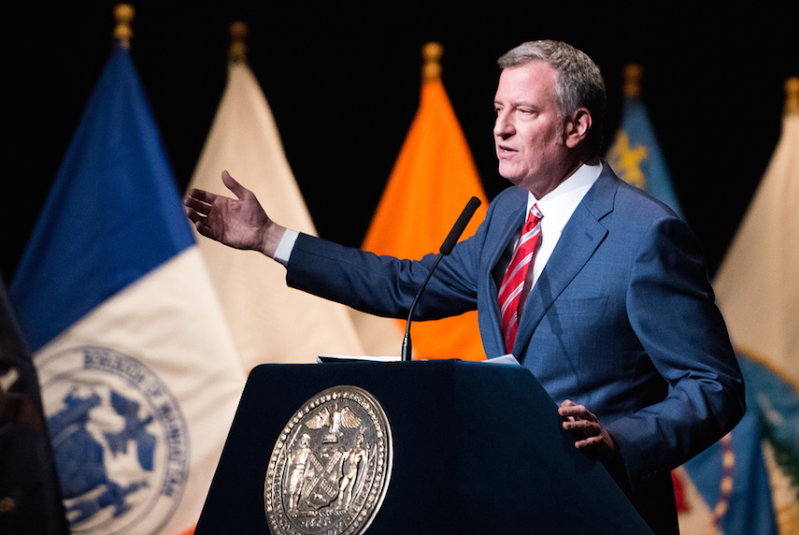Taking Stock of Vision Zero Three Years In

Earlier today, the mayor’s office released its “Vision Zero Year Three Report,” an 82-page self-assessment of City Hall’s efforts to eliminate traffic deaths by 2024.
The de Blasio administration has reduced fatalities every year — the first time in more than a decade the city has had a streak of three years with declining traffic deaths. But the pace of improvement leveled off in 2016, highlighting how much work remains to reach the Vision Zero target.
The initiatives in the report — like DOT’s 18 miles of protected bike lanes and pilot program for raised crosswalks — aren’t news, but the visualizations help convey exactly what the city is doing to improve street safety.
Last year, for instance, DOT installed 776 LPIs, which give crossing pedestrians a head start on motorists. Before Vision Zero, the agency typically installed only 16 of these treatments annually. The map below shows the locations of LPIs installed since 2014:

Another area where DOT has made rapid progress: intersection improvements to make left turns safer, which have been installed at 107 locations since August. Transportation Alternatives’ Research and Policy Manager Julia Kite attributed the quick action to a “data-driven approach” that identified dangerous intersections where cost-effective interventions could have an impact.
“The fact that [DOT was] able to roll those out in one year really gives faith that it’s something we can see spread across the city,” she said.
The report also illustrates how NYPD has shifted its enforcement priorities to emphasize six “Vision Zero violations” — speeding, failure-to-yield, failure to stop at a traffic signal, illegal turns, using a cell phone, and disobeying street signs. Those offenses accounted for 61 percent of total moving violations last year, compared to 46 percent in the three years preceding the launch of Vision Zero.

These interventions have made a notable difference at the dangerous “priority locations” where the city is focusing resources and attention:

Nevertheless, total traffic fatalities didn’t change much last year, and pedestrian and cyclist fatalities increased. The city will need to take bolder action and not shy away from transformative changes, Kite said, in order to make a substantial dent in the number of traffic fatalities.
“It probably will take something very, very drastic,” she said. “It’s good to see so many priority locations received treatments in 2016, but there are still a lot waiting for significant interventions.”






